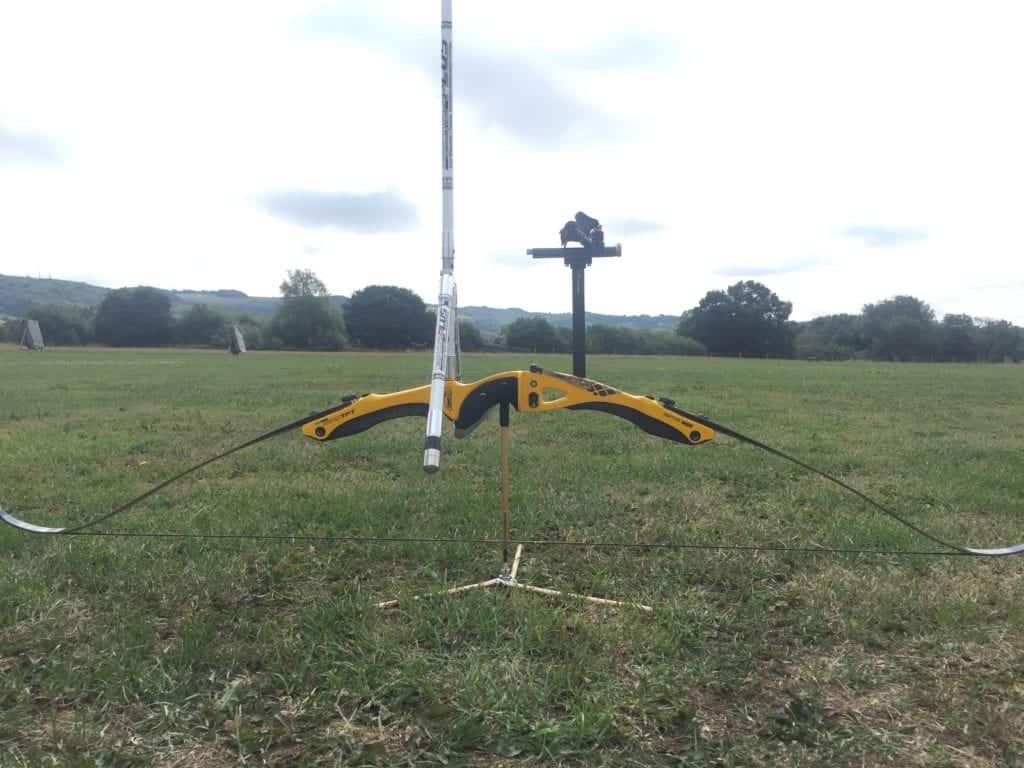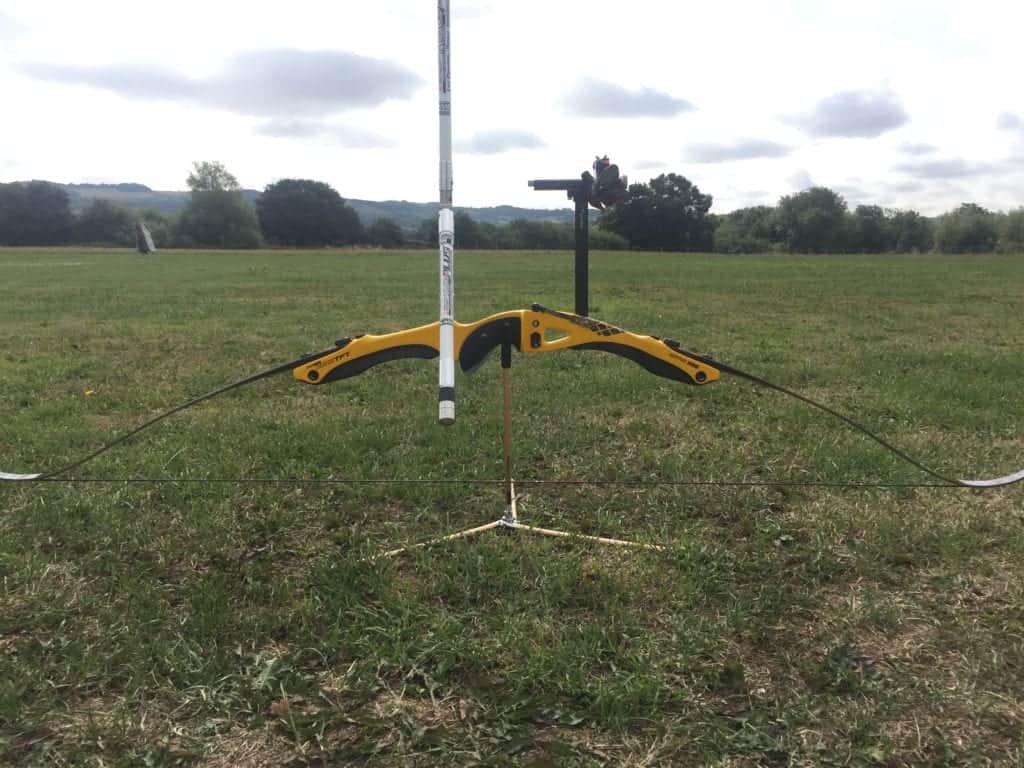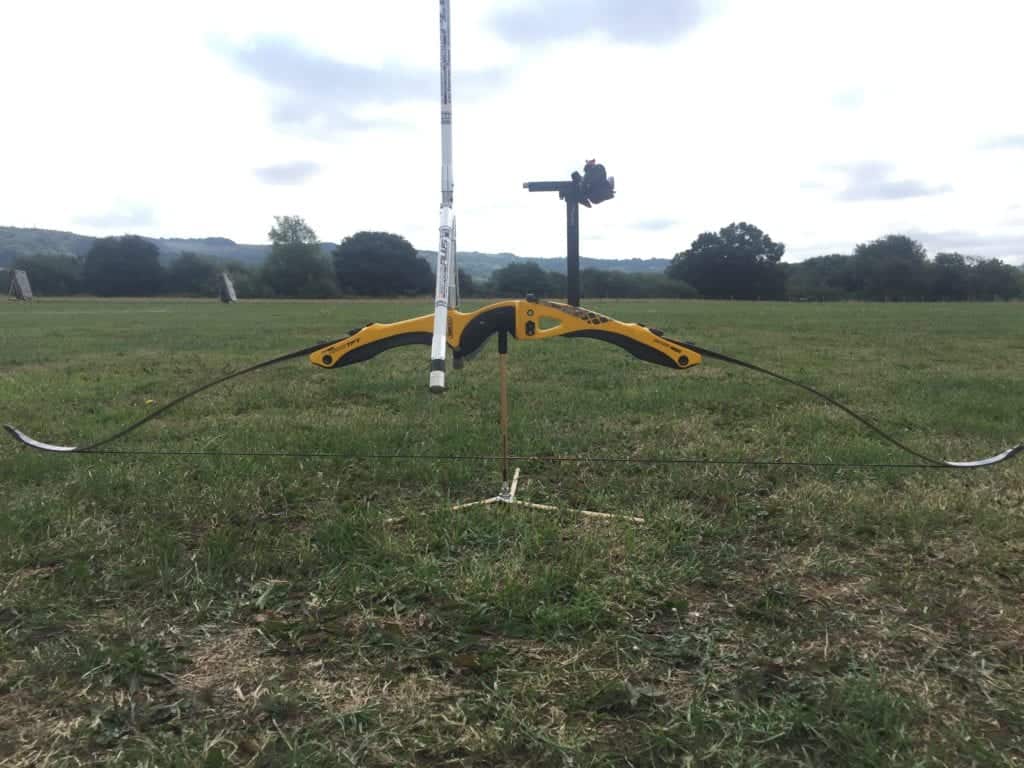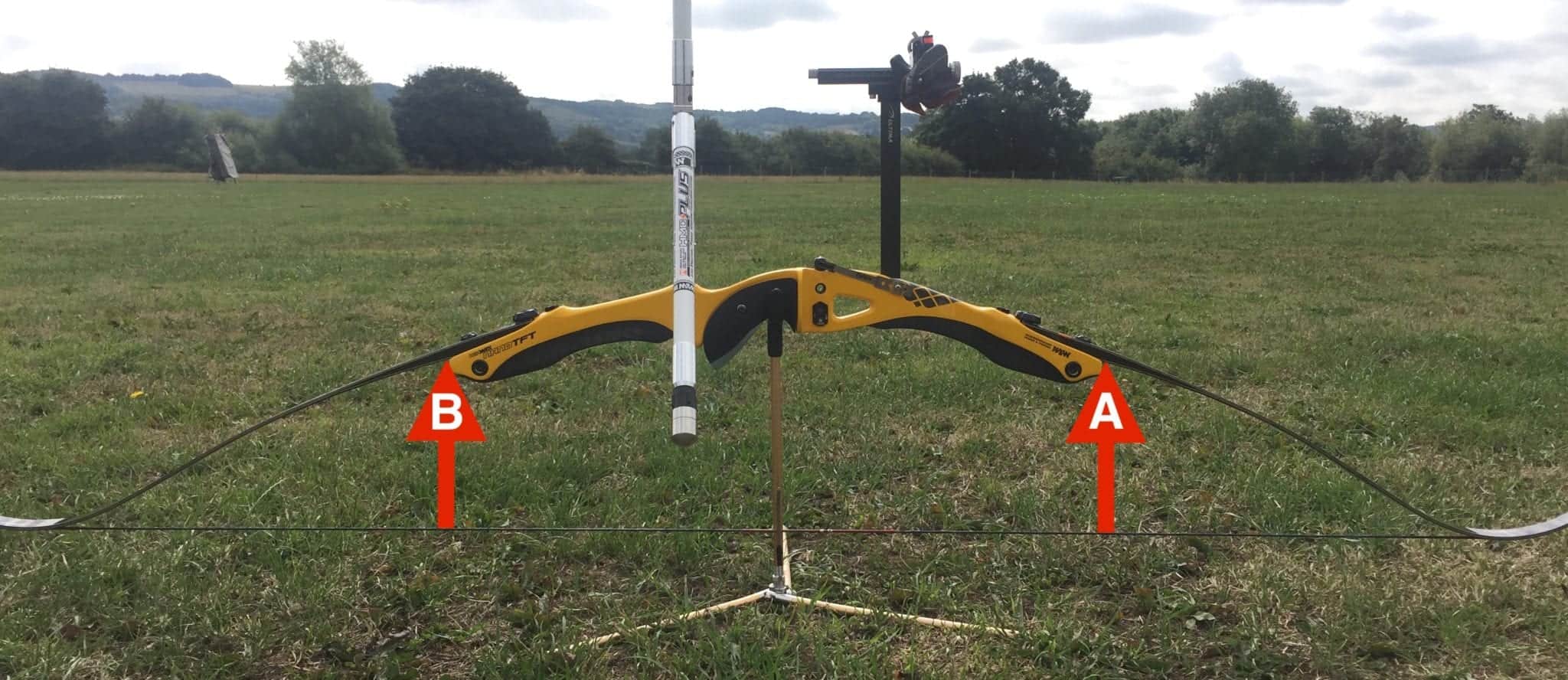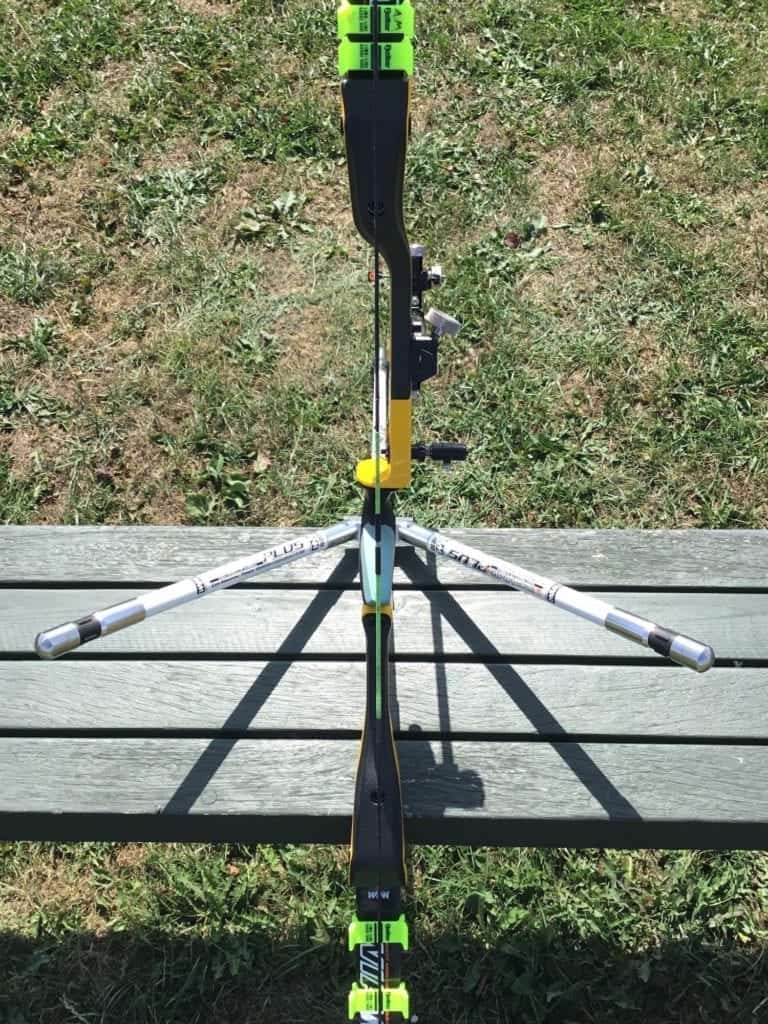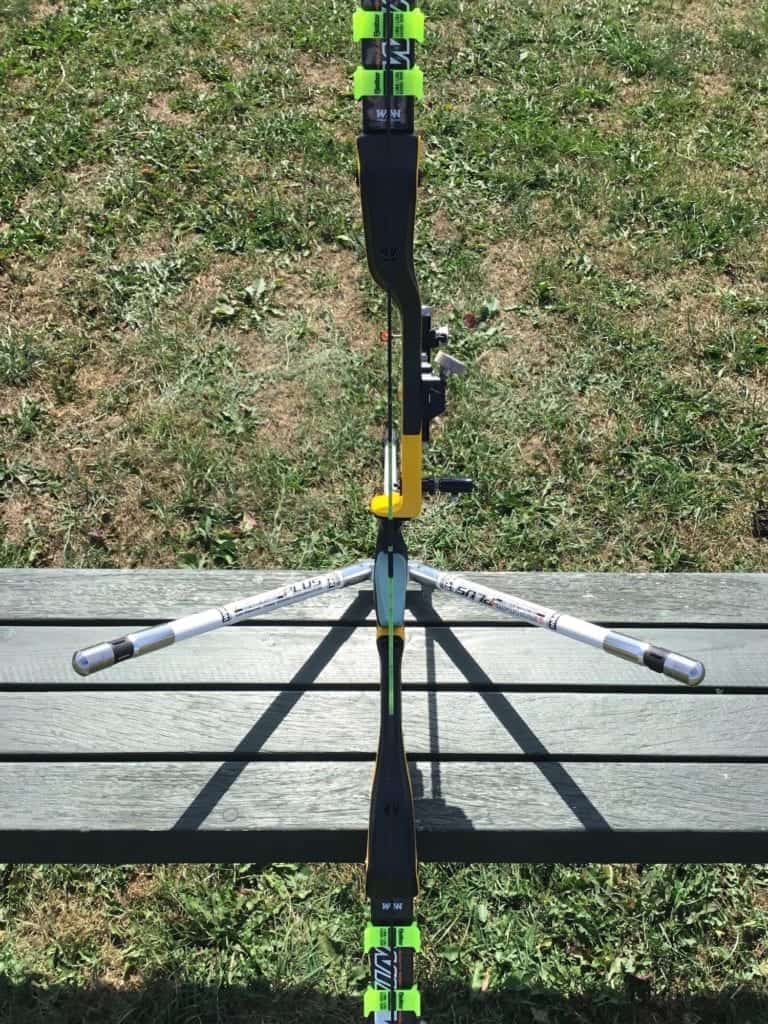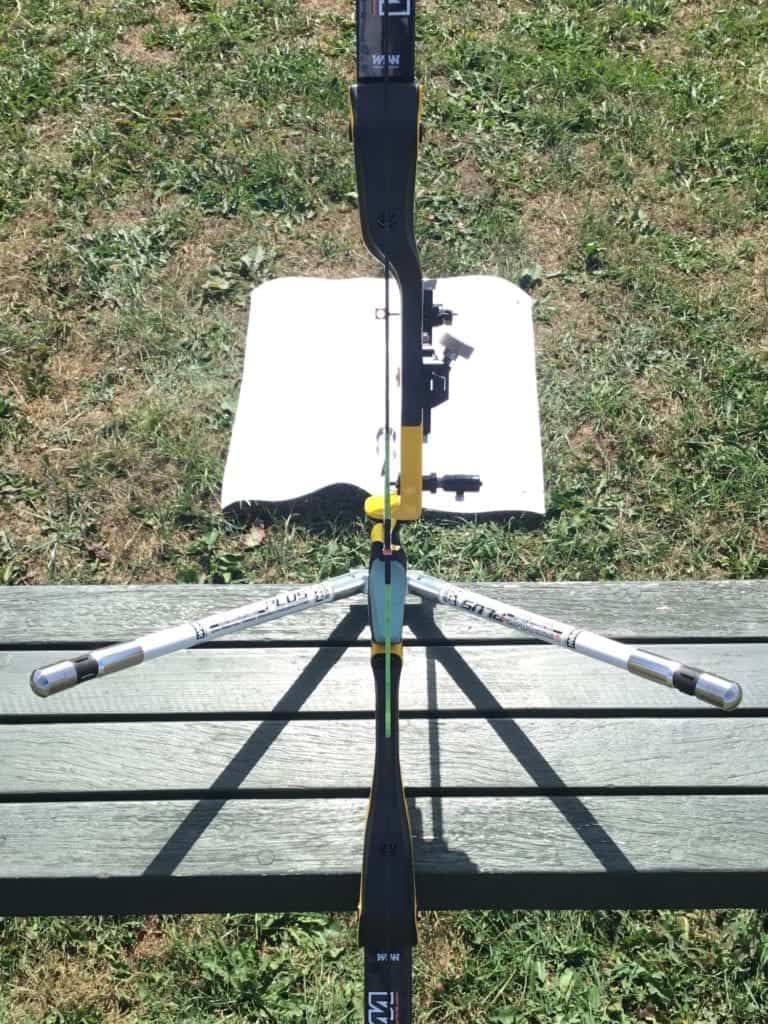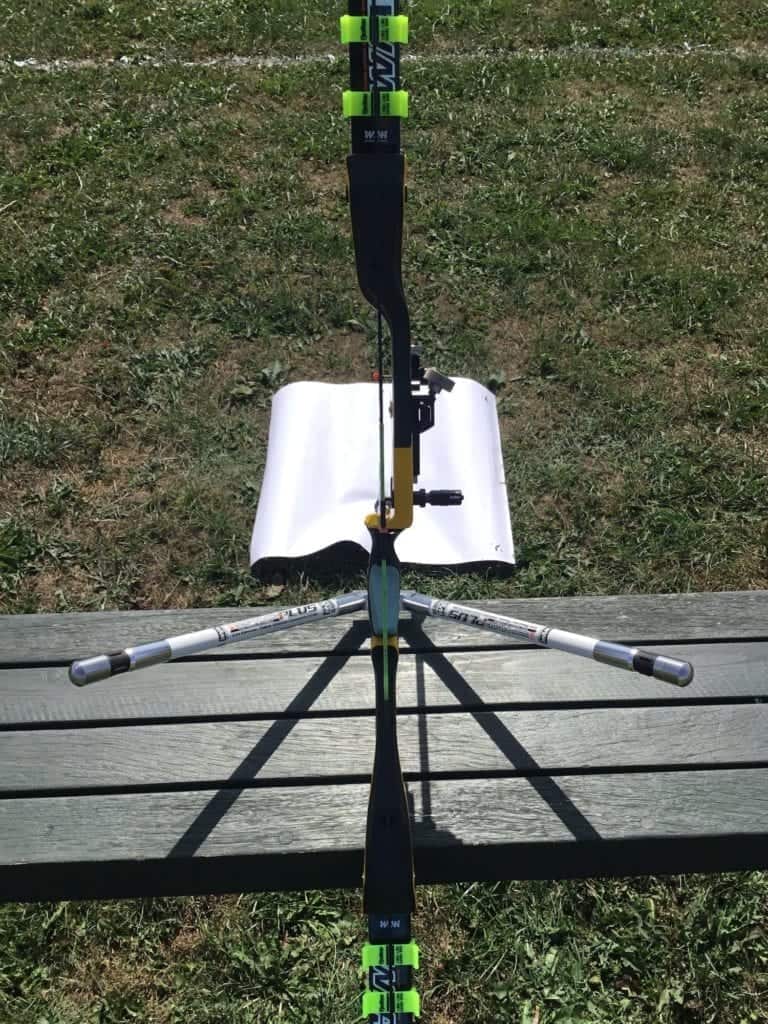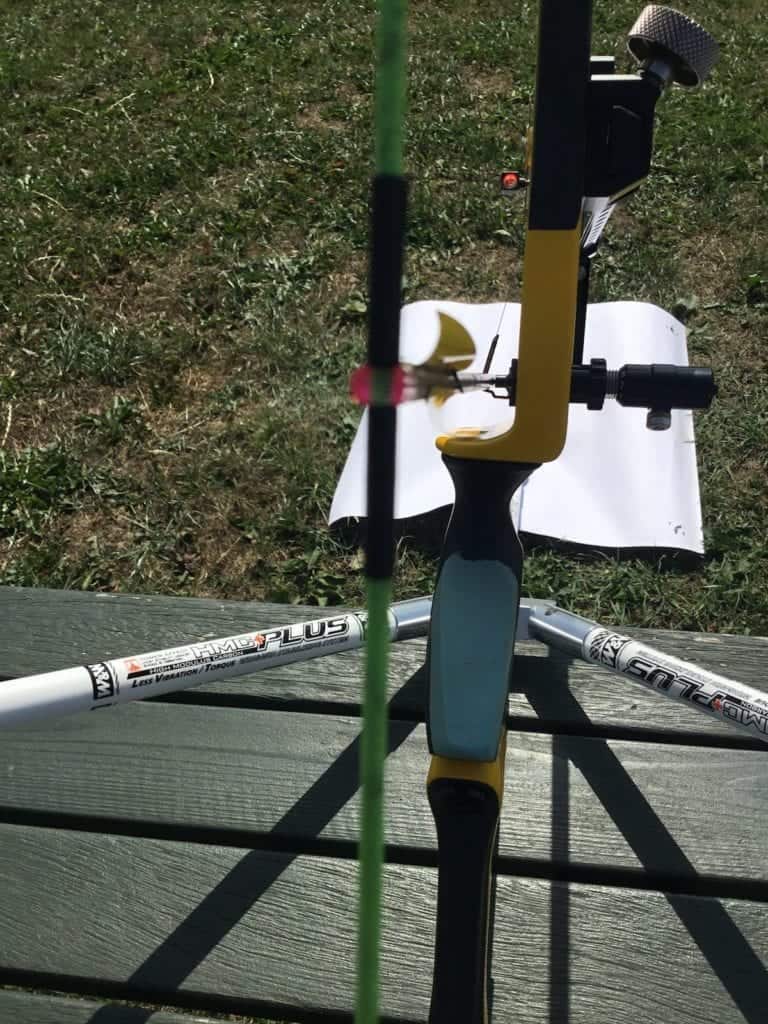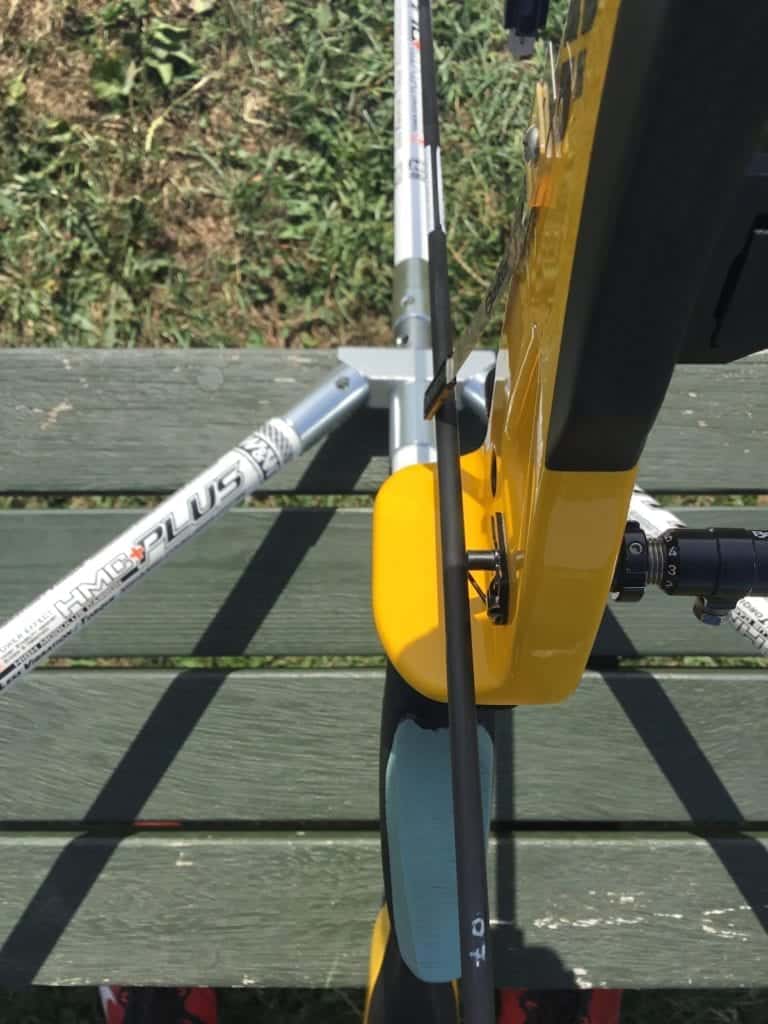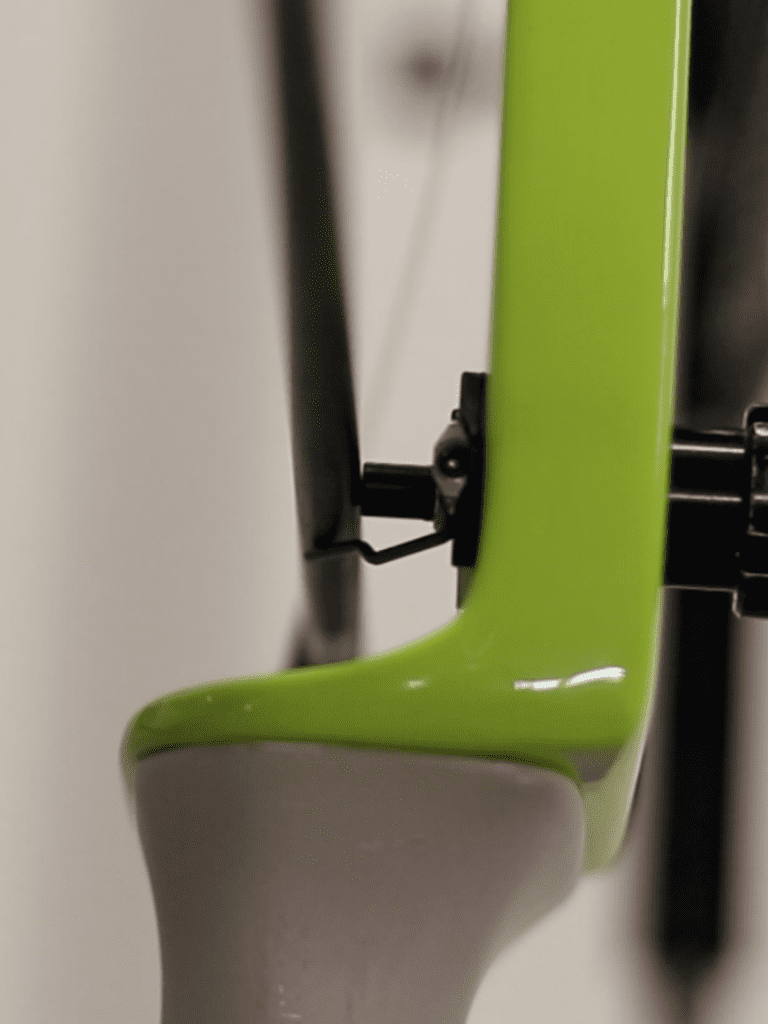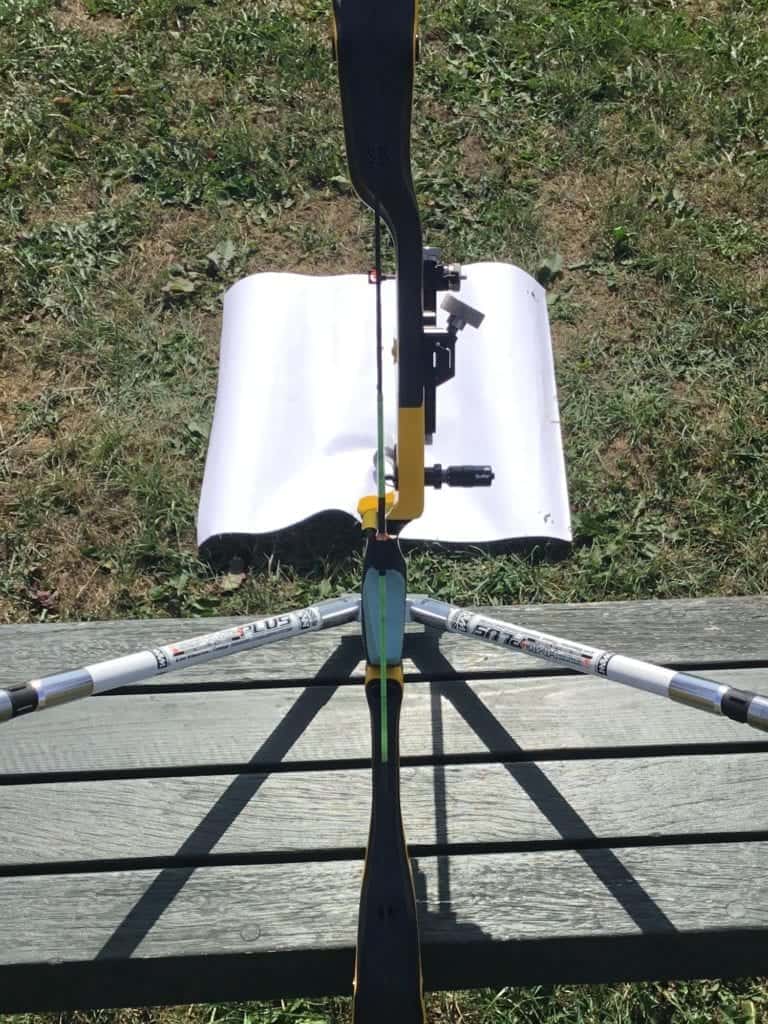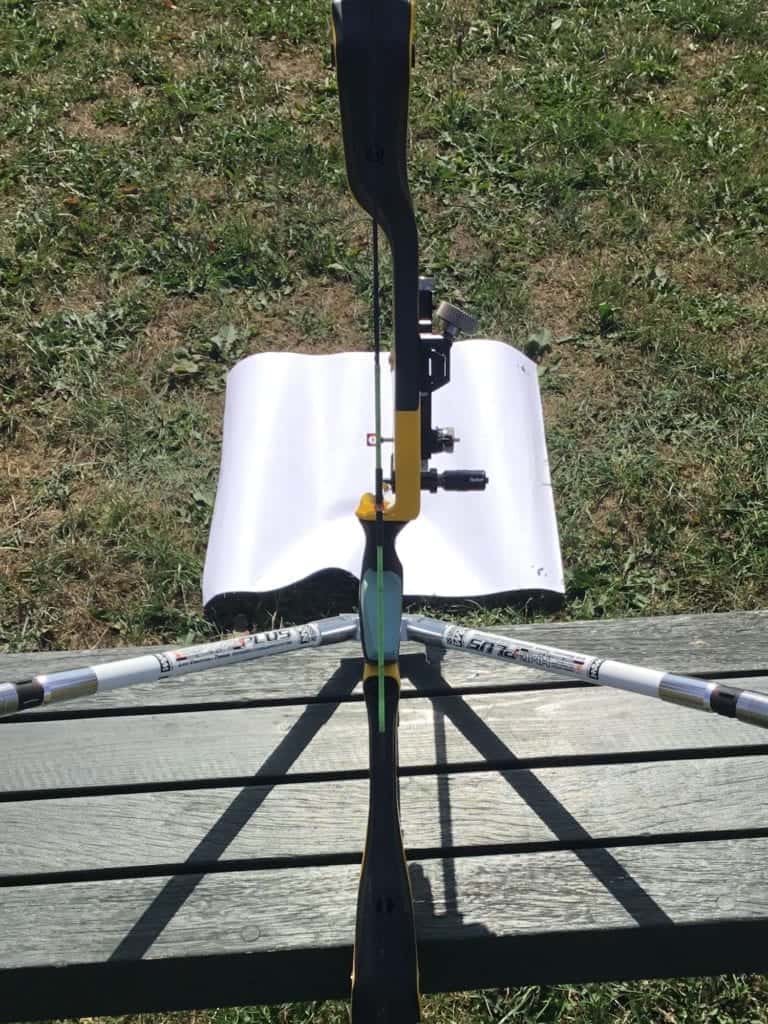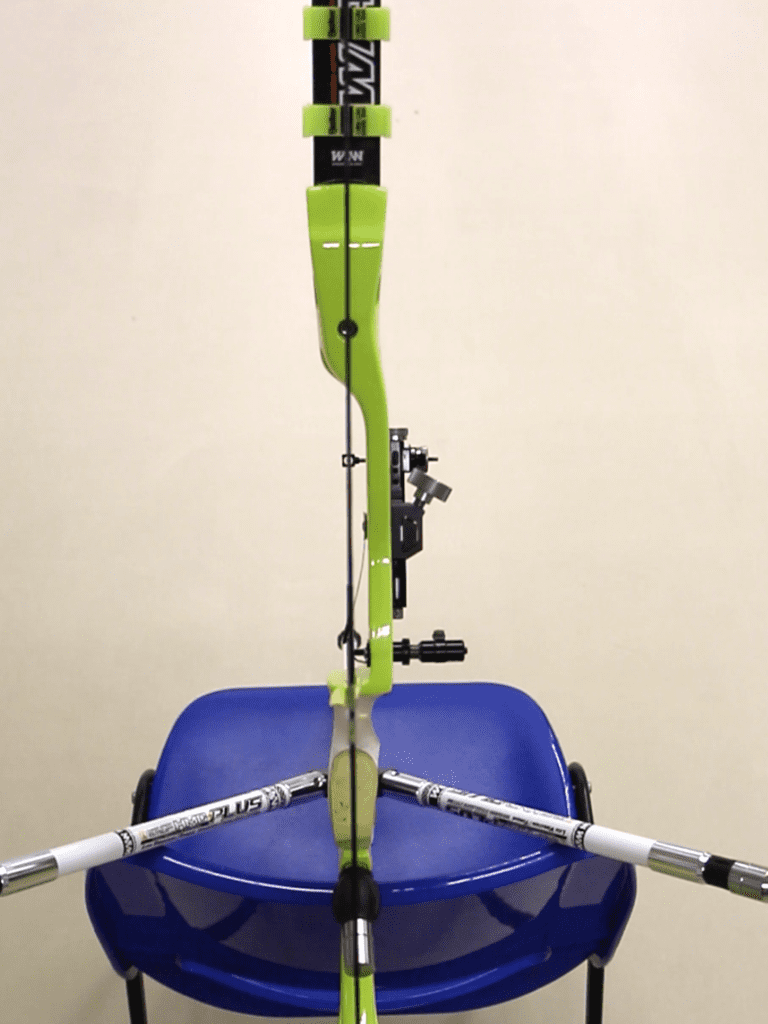How To Tune A Recurve Bow
Table of Contents
How To Tune A Recurve Bow - Tuning Guide Part 1
INITIAL SETUP
Before you learn how to tune a recurve bow, you’ll need to start by assembling everything together. This includes the arrow rest, clicker, sight, stabilisers…etc. Place everything approximately at this stage. Now you’re ready to start.
You should then always start your recurve tuning by setting the proper nock fit, poundage, and tiller for your bow. You can slightly vary the poundage of your bow to help your tuning, but it is best to set the poundage to something you can manage at the start and try to stick with it. If you shoot a bow which is too heavy for you, it doesn’t matter that your tuning is good because it will be hard for you to shoot it properly.
If you’re not sure what bow weight you can manage, have a look at our 7 Plus 2 Test. This will help you find a good bow weight.
NOCK FIT
The way your nock fits on the string has a huge impact on recurve tuning. And it also changes the way the bow sounds. You need to use a centre serving thickness which gives you the right nock fit for your string and nock choice. Read our Complete Guide to Proper Nock Fit which includes a handy chart to find the perfect nock for you.
Indicators of good nock fit are:
1. The nock firmly clips onto the string with a crisp audible ‘click’.
2. The ‘ears’ of the nock slightly widen and then close back down as it clips on to the string.
3. When you rotate the nock around the string, it doesn’t grab and rotate the string with it.
4. The nock can’t move a large amount back and forth when it’s clipped to the string. A very slight amount of play is ok.
5. You can displace a hanging arrow from the string by a firm tap a couple of inches from the nock.
POUNDAGE
Use a pair of scales (luggage scales work fine) to draw up your bow at close distance. When the clicker drops at full draw, this is your draw weight. Then simply turn the limb bolts (see Fig. 1) on your bow until you reach the weight you want. Make sure to un-string your bow before doing this. Lastly, make sure the string doesn’t press against any place on your body when you measure the draw weight, as this will give a false high reading.

The limb bolts are very adjustable, and you can use them to adjust poundage. However, you ideally want to keep them close to the middle position. The limbs can be critical if the bolts are too far in. Having the bolts too far out can give the same issue, as well as potentially being dangerous. Check your bow manufacturers handbook for the minimum number of inward turns that are required to have the limb bolts in a safe position.
When the limb bolts are in the ideal position, the curve made by one limb will smoothly continue through the riser and into the other limb. You can see in Fig. 2 examples of the limb bolts when they are in the correct position (Fig 2b), too far out (Fig 2a) and too far in (Fig 2c).
TILLER
The tiller of a bow is the slight difference in the draw weight of the top limb versus the bottom limb. You can calculate this by measuring the distance between each limb and the string when the bow is strung. You can see this in Fig. 3. Measure this distance using a brace height gauge placed against the inside surface of the limb. Then simply read the distance mark against the string at its shortest point.
If the top limb-to-string distance is larger than the bottom limb-to-string distance, you have a positive tiller. If the reverse is true, you have a negative tiller.
A good starting point for your tiller is normally +0-4mm. Most people shoot a positive tiller. Importantly, you should adjust the poundage and tiller together as they are linked.
How To Tune A Recurve Bow - Tuning Guide Part 2
BOW ALIGNMENT AND SETUP
The next stage tuning a recurve is to setup and align your bow. This starts with limb alignment, followed by setting the centre shot and finally the sight alignment. If you setup and align your bow properly here it makes the rest of the tuning process much easier. Many people struggle with limb alignment, but follow the steps below and it should be simple.
LIMB ALIGNMENT PRECAUTIONS
Aligning the limbs makes sure they are straight in the bow and that when you draw them, they draw and shoot in a straight line. Having the bow and limbs in alignment is good for a number of reasons. It can make the bow react better, shoot more quietly, be more forgiving, and it makes setting the centreshot easier.
Precautions Checklist:
1. Limb gauges can become deformed over time if they are squashed or bent in storage.
2. Gauges rely on the limb width and coating being consistent to get a consistent reading. However, most manufacturers coat the limbs with lacquer or sand the limbs during production. This sometimes means the limb gauge sits slightly off centre but the limb is actually straight.
3. Because of this, always check the alignment without limb gauges as well as with limb gauges. Don’t blindly follow limb gauges.
4. Also use multiple limb gauges, not just one on each limb.
5. Always un-string your bow when changing limb alignment or poundage. Pluck the string a few times before checking the alignment again, or ideally shoot a few arrows.
6. If the long rod is not aligned with your bow, make sure the long rod isn’t the issue first. Remove any soft plastic washers between the stabilisers as these can become squashed on one side and cause the extender/v-bar/longrod to angle to one side.
7. If you start going round in circles, and find it hard to align your bow. Remove the limbs, reset the limb alignment setting to the middle starting position and start again.
Start by stringing your fully set-up bow and placing it on the back of a chair or bench as shown in Fig. 4. Then place the limb gauges on your bow as you can see in the pictures
You can see in Fig. 4b the correct alignment that we want. The string runs down the middle of the limb gauges and through the centre of the riser and longrod. It is possible for you to see the inside face of the riser slightly too (the side where the arrow rest touches). This is correct.
As we suggested, it is good to check the alignment without the limb gauges too. You can see in Fig. 4c the limb alignment without the gauges. The alignment is still good by aligning the string with the centre of the riser holes. Don’t align with the screws as these can be wonky when tightened. Also, the limbs still look aligned with the bow and the longrod is aligned too. This is good. The starting point for this was the bad position which is shown in Fig. 4a. Now we will show you how to do this.
LIMB ALIGNMENT METHOD
1. If the gauges line up with each other but the long rod is off, move BOTH limbs in the opposite direction to the longrod. This is from the direction we look at the bow in Fig 4. I.e. if the longrod is left, move both limb bolts to the right.
2. If you can’t align the limbs with each other. Align the string with the limb which is most aligned with the longrod. This is the top limb in Fig 4a.
3. Now align the string with the other limb. This is the bottom limb in Fig 4a. Whichever way the longrod is angled, you need to move THIS limb the opposite way. For our example in Fig 4a, we need to move the BOTTOM limb to the LEFT.
4. Once you’ve adjusted. Simply repeat the steps above until the limbs are aligned with each other, the riser and the longrod.
5. After adjusting the bottom limb, you can see the change from Fig 4a to Fig 4b. The bow is now in good alignment.
6. Finally, check the alignment without limb gauges as shown in Fig 4c.
7. Tighten everything down and shoot a few arrows. Then re-check the alignment one last time.
NOTES ON LIMB ALIGNMENT
This procedure works regardless of which bow you shoot. Although the adjustment system may be different, the process to follow is the same. Think about which way you need to move the limb and it works for any riser.
In Fig. 4a, you can actually see that the longrod is still pointed to the right when the string is lined up with the top limb. This means that we may need to move both limbs. However, we correct the limb which is furthest away first. Then we re-check the bow and see if we need to adjust anything else. In this case, we only needed to move the bottom limb. Over time you will develop a sense of how much adjustment you need to correct a misalignment. As a rough guide, to correct the offset position in Fig 4a the bottom limb will probably need to be moved between 1/8 and 1/4 of a turn.
CENTRESHOT SETUP
The centreshot is a slight adjustment of the arrow position compared to being in perfect alignment with the bow. There is no ‘correct’ centreshot and it varies for different people. It can depend on your technique and tuning.
A good starting position we recommend for your centreshot is shown in Fig. 5. Line up the string with the limbs and riser as shown, then adjust your pressure button length until the point of the arrow is just slightly to the left of the string. If you are shooting X10’s stiffer than the 650 spine, you might want the centreshot slightly more offset than this, due to the middle of the arrow being thicker than the tips.
The centreshot is just a starting position and it’s not important to get it absolutely correct. Later on you can adjust it more finely. Most people shoot with the centreshot shown in Fig. 5, which is why we start in that position. You may later find that you shoot better with a different centreshot.
It’s useful to place a sheet of paper on the ground in front of the bow as you can see in Fig. 5. This will help you clearly see where the arrow is and set the centreshot more accurately.
ARROW REST SETUP
As you adjust the centreshot, it’s also good to make sure your arrow rest is in the correct position and re-adjust it. This is because changing the centreshot can move the arrow position slightly.
You want to get the arrow rest in a position which places the shaft of the arrow in line with the pressure button (plunger). Furthermore, the rest should be in a position so that it holds the arrow securely with the minimum amount of arrow rest sticking out from the bow.
A good arrow rest position looks like that shown in Fig 6. a,b,c. From below, the rest arm should extend under and hold the whole arrow. However, you shouldn’t see any of the rest arm extend past the shaft of the arrow when viewed from above.
SIGHT SETUP AND ALIGNMENT
The final stage of your bow alignment is making sure your sight is level. This is very simple but is essential to make sure you don’t have to move your sight windage when you change distance.
Firstly, place an arrow in the bow. Then line your string up with the arrow and put your sight block at the top of the sight bar. Check where the string lines up on your sight. Finally, move the sight block to the bottom of the bar and check where the string lines up again. If the bar is straight, the string should be on the same place on your sight block, regardless of the vertical position of the sight block.
In Fig 7. a/b you can see this process demonstrated and can see the sight is level.
Finally, align your sight aperture windage so that it is directly in line with the string (Fig. 7c). This provides a good starting point for your tuning. Video 1 below from our Online Archery Academy YouTube channel also covers this.
Now that you’ve fully setup your recurve bow, it’s time to learn how to tune it properly in parts 3 and 4 which are the most in-depth parts of this tuning guide!
